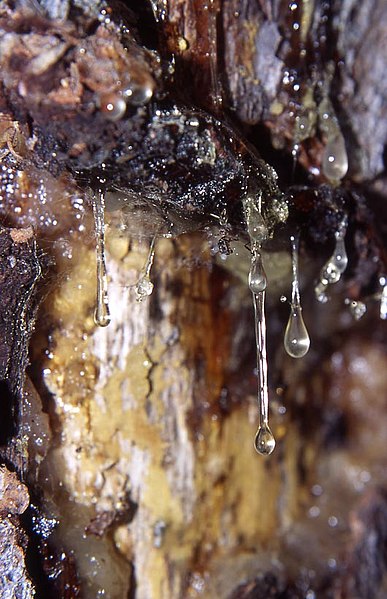Sesquiterpenes are a class of terpenes that consist of three isoprene units and often have the molecular formula C15H24. Like monoterpenes, sesquiterpenes may be cyclic or contain rings, including many unique combinations. Biochemical modifications such as oxidation or rearrangement produce the related sesquiterpenoids.
A recent study conducted in the Cosmics Leaving Outdoor Droplets large cloud chamber at CERN, has identified sesquiterpenes—gaseous hydrocarbons that are released by plants—as potentially playing a major role in cloud formation in relatively pristine regions of the atmosphere.
Big Sagebrush (Artemisia tridentata) contains sesquiterpene lactones which are sesquiterpenoids (built from three isoprene units) and contain a lactone ring, hence the name. These compounds are found in many other plants and can cause allergic reactions and toxicity if consumed in excess, particularly in grazing livestock.
Phallus indusiatus, in Cooktown, Queensland, Australia, which produces two unique sesquiterpenes
Terpenes are a class of natural products consisting of compounds with the formula (C5H8)n for n ≥ 2. Terpenes are major biosynthetic building blocks. Comprising more than 30,000 compounds, these unsaturated hydrocarbons are produced predominantly by plants, particularly conifers. In plants, terpenes and terpenoids are important mediators of ecological interactions, while some insects use some terpenes as a form of defense. Other functions of terpenoids include cell growth modulation and plant elongation, light harvesting and photoprotection, and membrane permeability and fluidity control.
Many terpenes are derived commercially from conifer resins, such as those made by this pine.
Second- or third-instar caterpillars of Genus Papilio butterflies, like this Papilio glaucus, emit terpenes from their osmeterium.




